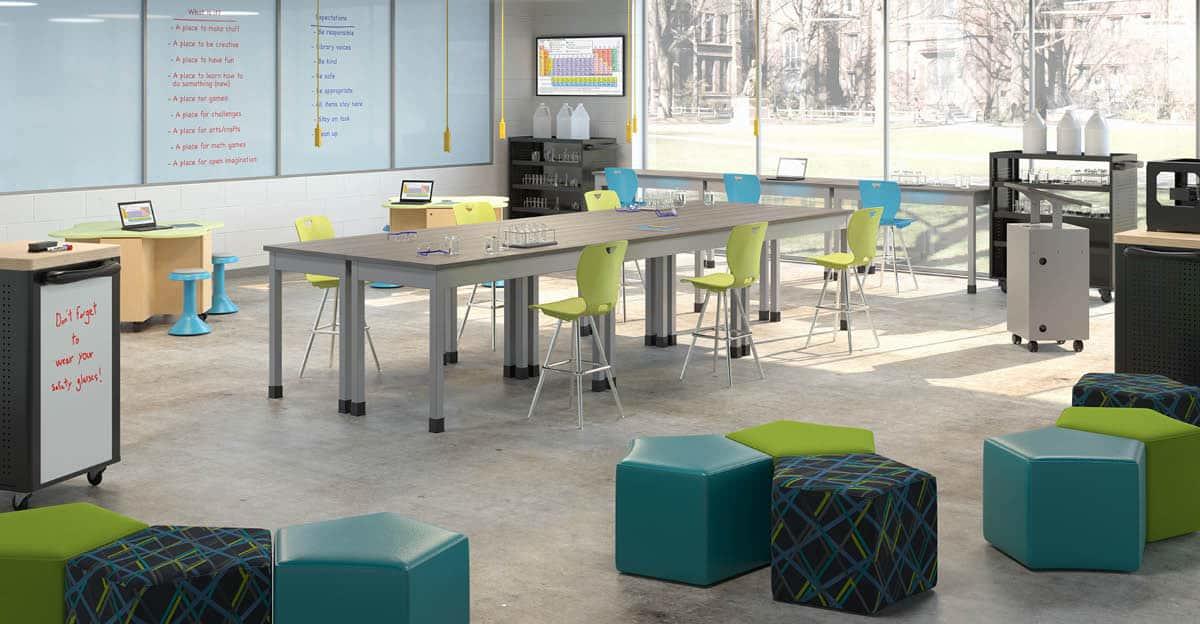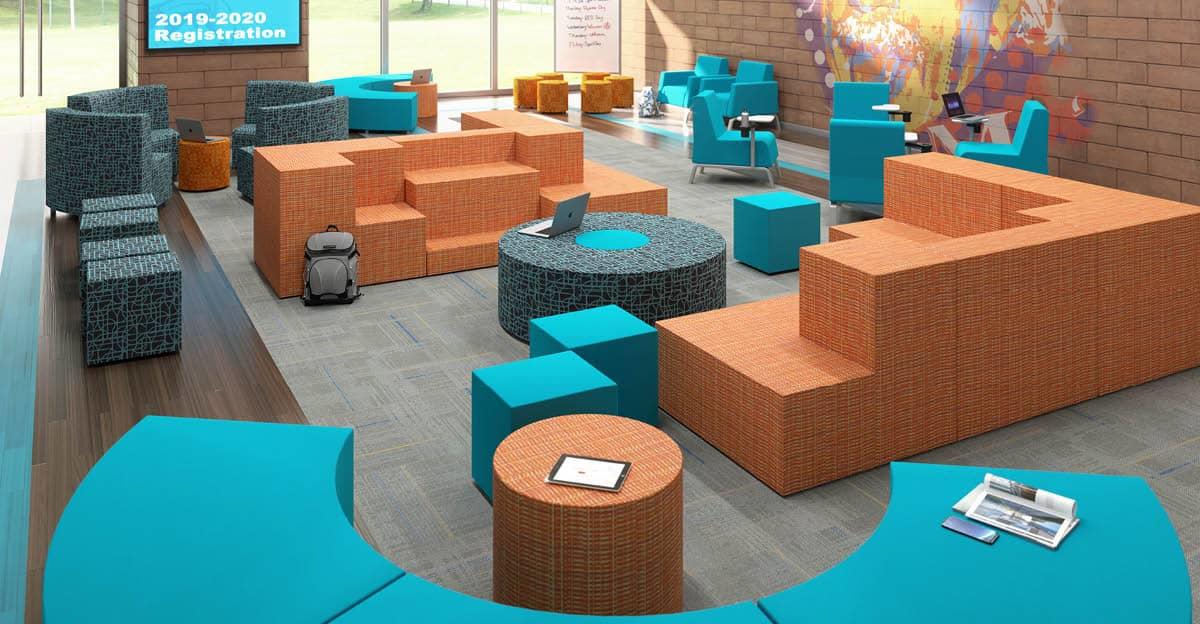The school library of today is an agile, dynamic space capable of supporting a wide range of 21st century learning activities. No longer a place that’s dominated by shelves of books, where students go for quiet study, the modern school library is becoming an active learning commons where students and teachers gather to research, learn, plan, design, create, and collaborate.
Transforming the physical space to support these activities requires understanding how students and teachers will use your library. Here’s some advice on how to accomplish this.
Identifying how a modern school library will be used: 4 key steps
Form a committee or task force. Involve representatives from all stakeholder groups in the planning process, including the media specialist, teachers, administrators, students, and parents.
Hold a brainstorming session. Get everyone together and let the ideas flow freely. At this point in the process, there is no such thing as a “bad” idea; anything is fair game. Frame the conversation by presenting the roles of the media specialist [link to post 01], your library program’s mission and goals, and how these fit in with the district’s overall mission.
Here are some questions to help guide the discussion:
- What kinds of formal learning activities will take place in your modern school library? What kinds of informal learning opportunities will you offer? How will these advance your mission and goals?
- What do you want students to feel when they walk into the space? What tone should it set for learning?
- How will you encourage teachers to bring their classes to the library? How will you inspire students to drop in during their free time or for independent study? How can you get them to stay?
- Will your library be open for use by the larger community as well? If so, for what purposes?

Prioritize your ideas. Once you have a comprehensive list of suggestions for how your modern school library might be used, arrange them into three categories: high priority (uses that are non-negotiable), significant (those that would be nice to try if you can make it work), and low priority (uses that are luxury items or even pipe dreams).
In making out your lists, think about how each idea aligns with the goals for your library program, the roles you envision for your media specialist, and your district’s overall mission and learning goals—and give higher priority to those that closely align with these concepts.
Invite public comment. Before you move any further, give all stakeholders a chance to comment on your ideas. Invite public feedback through a variety of channels, such as in a school or district newsletter and on social media.
Modern school library functions to inspire you
There’s no doubt you’ll come up with lots of great ideas in your brainstorming session. To get you started, however, here are just a few ideas for how libraries are being used today in schools nationwide.
- Media literacy, information literacy, and digital citizenship instruction
- Professional learning for teachers and administrators
- Collaborative lesson planning between teachers and media specialists
- Independent and/or collaborative student research
- Reading and literacy initiatives
- Collaborative group work and project-based learning
- Makerspace activities
- Video production and sound mixing/recording studio
- Innovation incubator
- Student coffeehouse or café
- Literature clubs or book talks
- Public lectures and discussions
To learn more about designing a school library space that meets 21st century learning goals, download our free guide “Designing a Modern School Library” today.






Leave a Reply